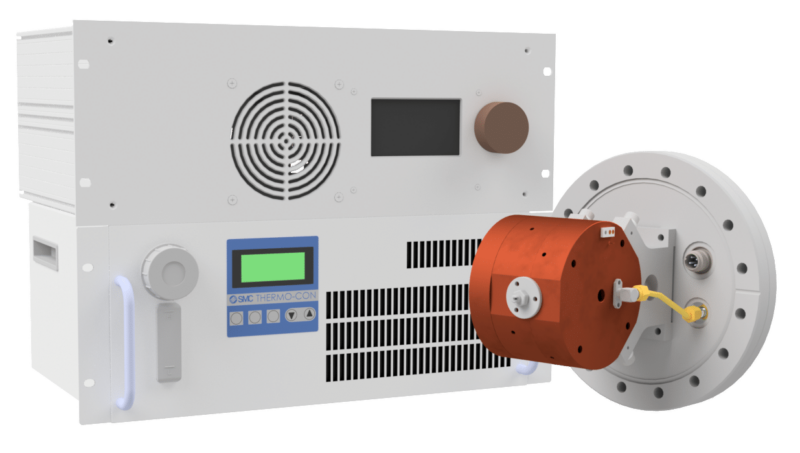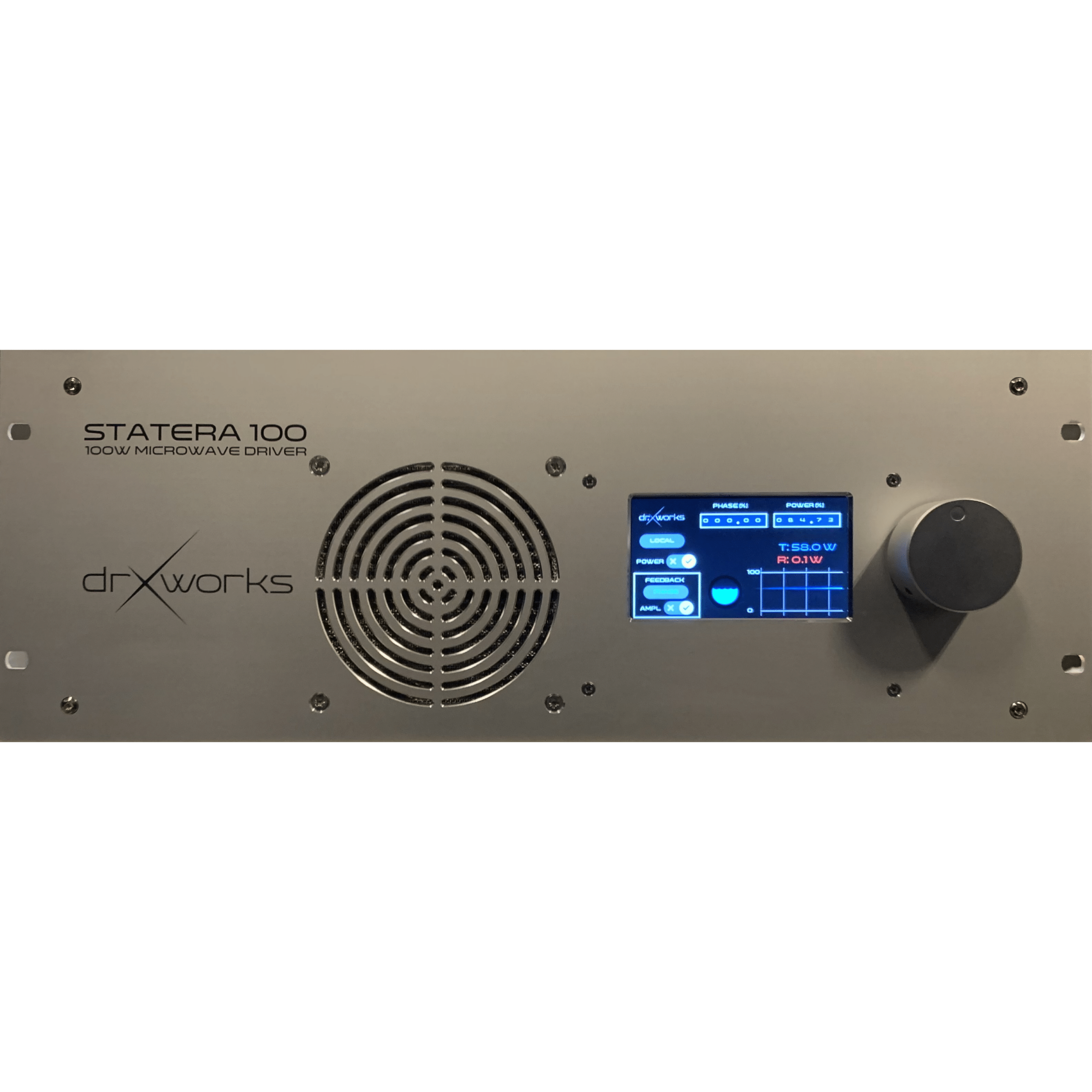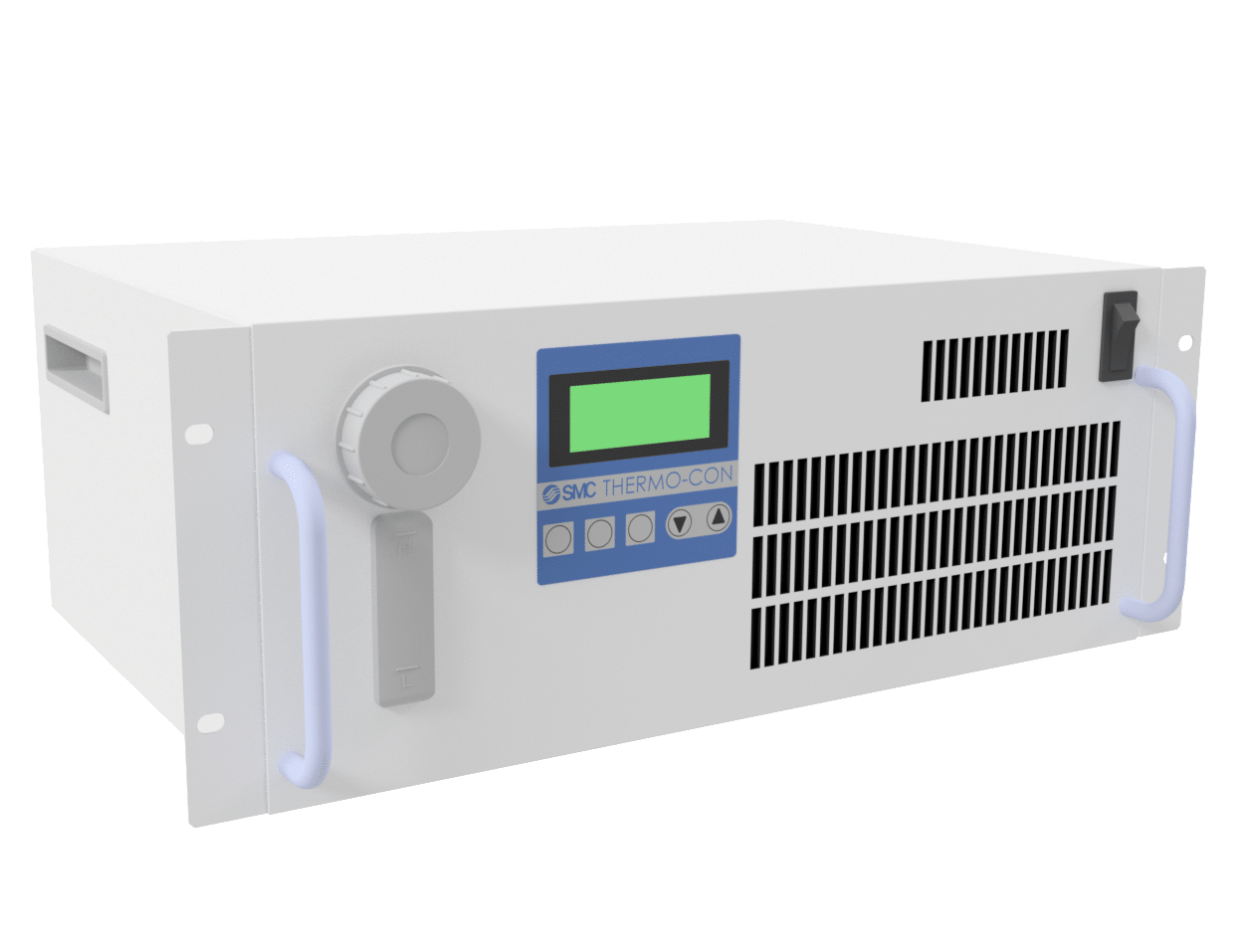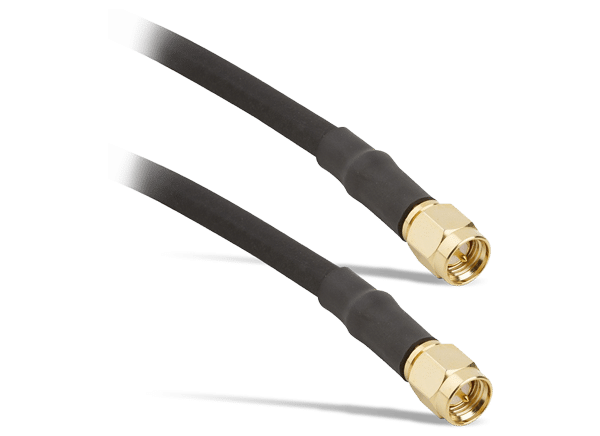Compression UNIT

The compression unit consists of a RF cavity which operated in the TM-010 mode. The cavity is driven by a 100W microwave driver that also contains a feedback system which stabilizes the phase and amplitude of the fields in the cavity. This is made possible by measuring the fields in the cavity by a pickup antenna. The unit also consists of a temperature controller which keeps the cavity at the desired frequency so that all applied RF power is absorbed.
The RF power is fed into the cavity through N-type coaxial connector. The compression cavity was originally developed for compressing 100 keV electron bunches from several 10 ps to sub 100 fs pulse lengths in our crystallography system. 100 W of RF power is sufficient to compress bunches to 100 fs at a distance of 20-40 cm downstream from the cavity.
To enable 100 fs temporal resolution, the RF phase has to be synchronized to within 100 fs with the femtosecond laser, which can be done with our Synchronizer. In addition temperature stabilization of the cavity is required to within 30 mK, which can be done with our temperature controller.
FEATURES
- UHV compatible
- High field gradient
- Temperature sensor
- Pickup antenna
- Active field stabilization
- Compact
SPECIFICATIONS
| Operating temperature | 20-25 deg celcius |
| Frequency | 2.9985 GHz* |
| Quality factor | >6000 |
| On axis electric field | 2.5 MV/m** |
| * Customization available | |
| ** for an input power of 100W |
This Unit Contains
UHV Compression Cavity
The ultra high vacuum compression cavity is a compact, single-cell, power-efficient resonant microwave cavity, supporting a TM-010 mode at a resonance frequency of 2.9985 GHz with an unloaded quality factor Q≈6000. The special ‘Omega’ shape of the cylindrical cavity enables the concentration of the oscillating electric field on the symmetry axis, which coincides with the path of the electron beam passing through. In this way, electric field strengths up to 10 MV/m can be achieved on-axis over a length of 6 mm with 1 kW of RF power. The cavity also features a pickup antenna to measure the fields inside the cavity.
Statera 100
The RF cavity is driven by a 100W microwave driver with an active phase and amplitude feedback system. The driver stabilizes the phase and amplitude of the fields in the cavity which results in optimal performance. The driver measures the actual fields in the cavity by means of a pickup antenna and compares both the phase and the amplitude with the input signal that is offered to the driver. Both the phase and amplitude are then stabilized using loop electronics. The phase and amplitude errors can be monitored on a scope. In addition the amplitude and phase setpoints can be adjusted independently.
Temperature Controller
The temperature controller makes sure that our cavities stay on resonance when RF power is applied. When a RF cavity expands the resonance frequency of the cavity will change which will result in less absorbed RF power. The phase of the RF fields also changes with temperature so it is of great importance that the temperature of the cavity is actively monitored an stabilized using the temperature controller. This is done by measuring the temperature of the cavity using a Pt100 temperature sensor which is the input for the control loop that stabilizes the cavity temperature by either heating or cooling the water that flows through the copper heatsink which is directly connected to the cavity. The temperature control unit is fully integrated in our Statera microwave driver.
Cavity Cable Kit
The cable kit contains all the necessary cables to operate the cavity. We provide phase stable cables, insulated water cooling tubing and a temperature sensor cable.





